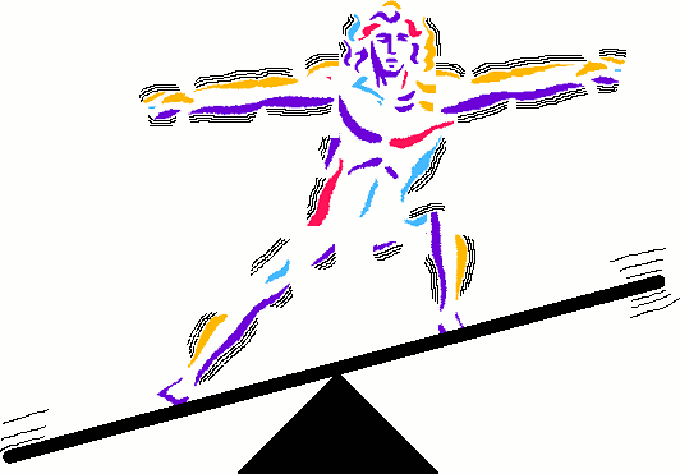
Homeostasis is a rare word, used in biology, but it could be useful in the context of the epidemic we are suffering from. Homeostasis has to do with balance and at the same time with imbalance. In short, it speaks of a balanced imbalance, or a stable imbalance. Life is a pure paradox.
Human beings have always had the feeling of living in a stable world. Nothing ever happens and the mountains do not change places. And it’s true, but only on the scale of human generation. There was a time when those mountains that support the horizon were the bottom of a sea, or a gigantic underground magma chamber.
Nor have the continents ever been still. They actually keep moving. The earth separates, gathers, breaks. These are geological phenomena, moved by gigantic forces operating inside the Earth, where the boiler of its engine is located. The climate has also changed, and we did witness that. Only a century ago, glaciers were much more extensive than now. We can check it on old postcards. Without knowing it, our grandparents and great-grandparents lived at the end of a small ice age.
But the reality is that there is no stability in biology either, on any scale. The species are permanently faced with crises, they do not know any other type of existence. We could affirm that living beings are always experiencing a crisis or recovering from it. We could go further and ensure that a species is continually on the verge of extinction. Extinction simply consists in not having been able to overcome the last crisis.
Life is about solving problems
In this ongoing struggle, organisms, as individuals, are also not subject to tension. The philosopher Karl Popper was correct in his definition of life: it consists of solving problems. Minerals and the dead have no problems they can solve and so they never change. Our atoms change, our molecules change, our cells change, but we remain.
And this is where the word homeostasis comes in. Homeostasis is the ability of an organism to readjust after a serious alteration. Organisms live in dynamic, not static, equilibria. The Segovia aqueduct is in static, architectural balance. If a single pillar falls, part of the canal sinks and the water stops circulating, rendering the aqueduct completely useless. There is no way for the aqueduct itself to segregate a new pillar. Constant balance (or imbalance) is inherent in being alive.
Thus, a bacterium is a very complex system, with numerous well-differentiated internal structures that divide the work. Any cell in our body is even more complex, and the complexity will be greater in the tissues, in the organs and in what in biology are properly called systems, such as the respiratory, nervous, circulatory, locomotor, immune, digestive, reproductive, or excretory. Finally, the individual (a plant, an animal, a person) is a system of systems of systems of systems. But it doesn’t end there.
Above the individual is the social system that philosophers, beginning with Plato, have compared to a biological organism. The social body also has homeostasis and that is precisely what allows it to overcome crises. Contrary to popular belief, the fall of an empire, such as the Roman of the West (not that of the East) or the Mayan, was not caused by a single crisis, but by a series of chained and closely followed disturbances to which the empire failed to cope. Resilience simply consists of recovering quickly enough that the next shock hits us in balance.
Other crises will come
The coronavirus has caused a health, economic and social crisis that we will overcome without any doubt. Other crises will come in the future and will probably be very different, because we will have learned to prevent this and other similar ones. Since we cannot guess the nature of the next attack, the only thing left for us is to reinforce the homeostasis of our society, which is increasingly global.
This does not mean that we should remain static, but quite the contrary. It is about improving our ability to achieve dynamic balances that allow us to face any disturbance without losing stability. It is not a question of imitating Roman aqueducts, but rather biological organisms.
In his monumental “The Magic Mountain”, Thomas Mann collects in the mouth of the young Hans Castorp the definition of life as a “fever of matter” that balances in precarious balance “within this very complex and feverish process of decomposition and renewal” . Our society, still wounded, is alive. After the blows, of the inanimate objects only fragments remain; scars come out of living things.
And that is the political lesson, in the best sense of the word, that we can extract from the COVID-19 crisis. Homeostasis is only achieved if the organism is well organized, if it does not incubate distortions within it that make it unstable. We will overcome this crisis, and the next, and the next, and the next, if we are now concerned with reducing internal imbalances in education, health, the environment, democracy, wealth, culture, science, justice, solidarity and sensitivity.
Homeostasis is, therefore, the appropriate word. If our society maintains its internal balances, it is certain that it will survive all crises. Let’s make sure that the rope on which we balance is not too loose.
Author Bios: Juan Luis Arsuaga is a Professor of Paleontology. Joint ISCIII-UCM Center for Human Evolution and Behavior. Burgos Museum of Human Evolution at the Complutense University of Madrid and María Martinón-Torres is Director of CENIEH at the National Center for Research on Human Evolution (CENIEH)
